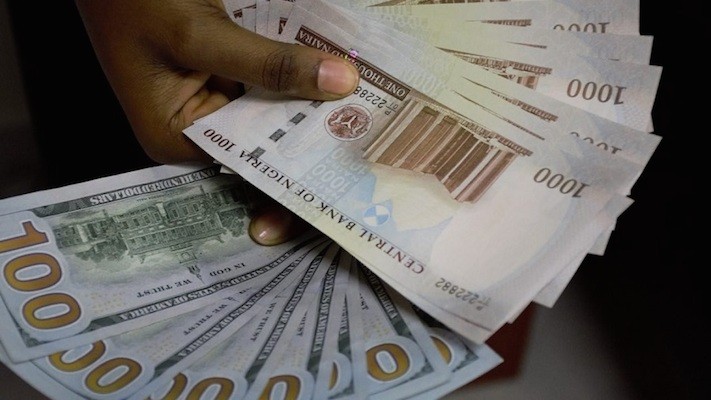NGN FX Rate: What’s That Sweet Spot? The 3-Pronged Tactical Roadmap Approach
BY FEMI ONAKANREN

Within the last 14 days, the Nigerian Naira, NGN has appreciated significantly by about 30% (N1,382/$ as of 21st of March, 2024) from the dithering heights of N1,900+ in February 2024.
This development has come on the back of CBN’s aggressive and strategic deployment of sector refining policy initiatives, rollback and recall of effective policies which had been jettisoned, central bank operations holes-plugging, regulator oversight and monitoring powers to preserve the integrity of the money market (BDC, Binance, etc), transaction dynamics restructuring, FX backlog clearances (valid claims), and regular, timely FX sales as market steadying interventions.
In tandem with the above, the CBN had an eye on interest rates to tackle the inflation end of the spectrum.
The MPC raised the Monetary Policy Rate(MPR), commonly referred to as interest rate, by four hundred (400) basis points to 22.75% from 18.75% percent. It is projected to marginally increase it again at its next MPC meeting.
Further, the bank issued treasury bills auctions, which were well subscribed. These efforts were aimed at mopping up excess liquidity fueling inflationary pressure, especially in the light of the apex bank’s previous submissions.
In December 2023, The Central Bank of Nigeria (CBN) disclosed that the currency in circulation (CIC) reached a new year high of N3.4 trillion as of December 11, 2023. This was an increase of 13.71% or N410 billion from N2. 99 trillion recorded in October 2023.
The appreciation has burst the bubble for speculators and thus added to the rapid appreciation. In this same period, crude oil production increased, and foreign reserves grew.
Data from the CBN indicated that foreign currency reserves rose by 3.62 percent to $34.37 billion as of March 12, 2024, compared to $33.17 billion recorded at the beginning of February 2024.
Investor confidence has also been steadily increasing as stock market performances have been largely positive.
All results point to a good job by the CBN Governor, Mr. Yemi Cardoso’s central bank team. This development is the first step in the aforementioned 3-pronged approach.
The 3-pronged tactical roadmap approach is divided into (1) Stability, (2) Sustainability, and (3) Macroeconomics Consolidation.
The CBN has achieved a level of stability with the FX rate and placed the wolves on notice.
The next step is sustainability. This applies to consistency in policy direction to manage rates and inflation (which currently sits at a 28-year high level), such as timely FX supply interventions, rigorous financial institutions regulatory compliance monitoring, continued foreign reserves adequacy and improvements, etc.
The search for the magical sweet spot, a stable and sustainable FX exchange rate, narrow-bandwidth that reflects the true value of the NGN and is driven by legitimate market forces of demand and supply, is the destination.
At this moment, one would be safe is suggesting that the CBN is effecting a currency-titration model to determine the appropriate FX value that neither overvalues nor undervalues the NGN.
Some circles have been praying for a return to previous figures of N400-N500 some 12-months ago (N460/$ as at March 22, 2023).
However, many forget that this value was under the previous subsidized FX rate regime. It is neither a stable point, a sustainable reference, nor are there cogent economic indicators determining the rate.
So, it is fair to have cautious and realistic optimism regarding the FX rate. The principle is to have an FX rate that reflects real sector economic activities more than dangerous pegging intervention props and supports.
This brings us to the third signpost, macroeconomics consolidation. The key drivers for the sweet spot FX rate will be fiscal policy direction and economy development activities and priorities of the federal government.
It must be noted that currency exchange rate appreciation does not necessarily mean improved economic circumstances for the country. Economic growth is a different beast that needs deliberate and focused actions, with key performance indicators, deliverables monitoring, and impact assessment frameworks.
Basically, the value appreciation should impact and reflect positively in the lives and activities of the average Nigerian. Positive indicators should push in the direction of reduced inflation rates, increased purchasing power of the NGN, as well as increased overall national economic productivity.
Recently, the federal government commenced a trade liberalization initiative, which reduced import restrictions on some products to shore up supply to meet local demands.
This is a welcome move but must be matched with targeted productivity support initiatives for local manufacturers and producers. Subsequent to culling the attacks by speculators, there is a need to redirect the appetites of Nigerians for foreign goods with respect to products that we have local alternatives and/or can ramp up local productivity (as seen in the case of Rice production).
The goal of this approach is to first ensure local supply adequacy and sustainability. Our local consumption needs should be addressed with a stronger NGN delivery value rather than chasing USD based products.
Further, the government needs to stimulate economic growth by creating and supporting credit lines for manufacturers, producers, and service providers. This action, however, requires clear fiscal direction and economy positioning.
Basically, we need to determine the areas we want to be export-strong/import-weak and vice versa. The managers of the economy should drive towards improving local alternatives’ availability and increased productivity for our key consumption spectrum.
At the same time, they need to set clear tones regarding our export policies and the key sectors to drive the initiative. With our abundant agriculture potential across a wide range of food and cash products, as well as plenteous natural resources availability, a holistic and definitive deliverables’ targets should form the platform for policy development and implementation.
A critical outcome of the above approaches is that jobs will start getting created. The creation of employment opportunities in direct and indirect modes will improve CPI and purchasing power parity.
This writer would like to acknowledge the several efforts at social interventions and palliative programs the government has been doing.
This has been facilitated by gains from fuel subsidy removal. According to the National Bureau of Statistics, NBS, the Federation Account Allocation Committee (FAAC) disbursed the sum of N2.07 trillion to the three tiers of government in February 2024 from the total revenue generated in January 2024.
However, I would also like to point out that the revenue windfall to the federal government, state governments, and local government administrators is not meant only for social interventions, palliatives, and/or public profile branding.
The revenue windfall should result in tangible changes in social infrastructure availability, improved health and welfare management, improved access to credit for MSMEs, productivity facilitation initiatives, education standard improvement initiatives, local security improvement initiatives and projects, favorable investment ecosystem development, etc.
As these are being pursued, it is also imperative for the citizens to take up the clarion of demanding accountability from their representatives and public administrators.
This should be objective and devoid of ethnic, religious, or partisan politics biases. Criticism is most welcome, but it should be devoid of agenda or exploitative sentiments leveraging. Also, objective criticism and suggestions should be treated as positive contributions, with the substance of the subject of reference being reviewed as the focus, without the contributor fearing for his safety, personal and career progression, or political demonification.
Ultimately, the FX sweet spot is more than just a figure. It is a destination determined by the progression of critical macroeconomic indicators. The suggested approaches above will result in significant appreciation of GDP and ensure a better distribution of wealth in the country.
Thus, the FX sweet spot, just as with previous submissions regarding the subject, is not a definitive figure. The figure, or range of figures, will be derivative of a lot of moving parts in fiscal and monetary policy planning, direction, and economy positioning.
The FX sweet spot, which we believe will be a truer reflection of the value of the NGN, should be driven by more than monetary policy initiatives and interventions. It should encompass the gamut of economic activities and developments within the country in short, medium, and long-term projections.
Femi Onakanren is a Business Consultant and Socioeconomic Policy Analyst. He writes from Lagos













